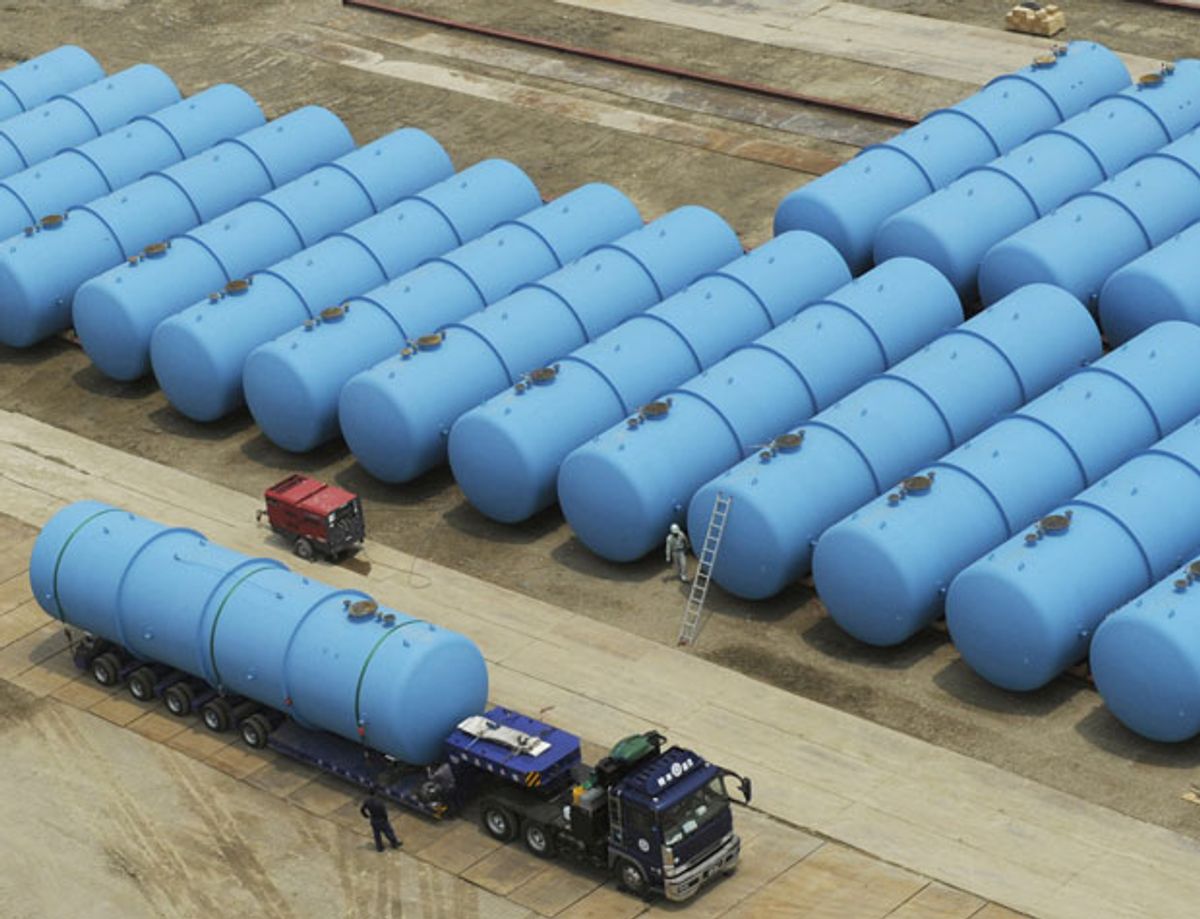As one who believes that nuclear power has a vital role to play in guaranteeing our future energy supplies and in lowering the risk of catastrophic climate change, I am chagrined to report that Fukushima is still providing plenty of ammunition to anti-nuclear forces, two years after the worse-than-imagined cascading disasters that befell the reactor complex in the wake of a devastating earthquake and tsunami.
The New York Times reported on April 30 that groundwater is infiltrating the ravaged reactor complex at a rate of 75 gallons per minute (almost 300 liters/m), straining the operators' ability to collect the contaminated water and prevent it for escaping into the Pacific Ocean.
On top of that, there is serious concern that the accumulating water could swamp the improvised systems that cool the damaged cores, and cause another major accident.
"It feels like we are being chased, but we are doing our best to stay a step in front," a Tepco general manager and spokesperson told the Times.
Already, tanks built to accommodate the strontium-laden groundwater have the capacity of 112 Olympic-size pools (photo). And yet Tepco is planning to remove a small forest near the plant to make room for more tanks. Originally, Tepco thought it would be able to dump wastewater from the plant into the ocean, after filtering out most of the strontium and other radioactive materials. But public outcry over the amount of tritium remaining in the water has led to that idea being scotched.
Could a new generation of small, modular reactors, built underground, give new life to nuclear construction in the advanced industrial countries? Two designs are looking especially promising, as Matthew Wald of the Times reported separately last week. But, as one caustic critic told Wald, the nice thing about paper designs is that they only carry the risk of paper cuts; defects often become apparent only when designs are further along and construction begins.
Photo: Kyodo/AP Images



